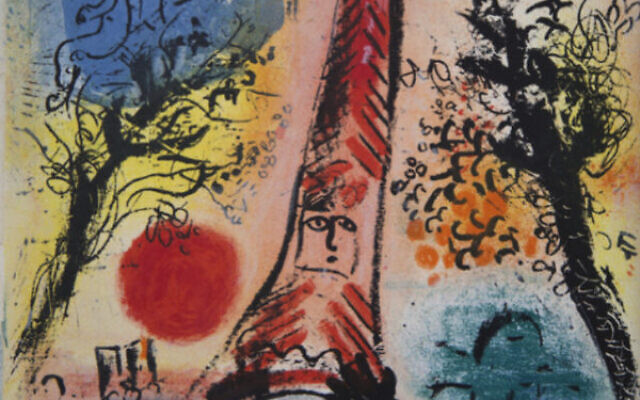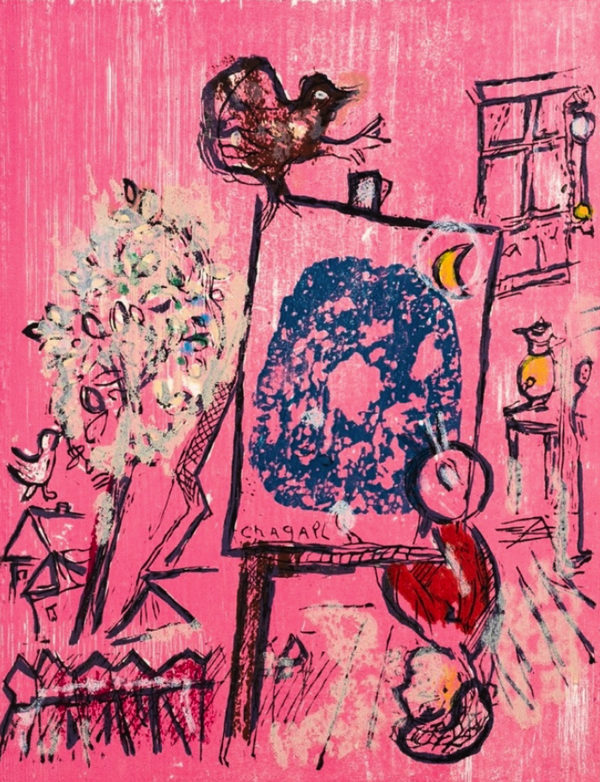Marc Chagall: the international artistic master
Niklai describes the exhibition as a lovely tribute to Chagall, and a nod to the very first large-scale exhibition that was presented at the museum, curated by the late Dr Helen Light, titled Chagall and the Bible.

“This is not going to be a traditional Chagall exhibition.”
This is how international curator and art historian Jade Niklai explained the upcoming exhibition at the Jewish Museum of Australia, featuring the work and story of Marc Chagall, arguably one of the greatest Jewish artists of all time. Niklai, who was raised in Australia, often visiting the museum, especially throughout her master’s degree, said that Chagall looks at the artist through a different prism, through his printmaking, poetry and public art. While many would associate Chagall with his famous stained-glass windows, according to Niklai, there was so much more to the man behind the art.
She refers to the three elements as “defining components of his practice, but not ones that we actually know about”.
The museum has been transformed into a Chagall-inspired dreamscape including an original-signed copy of a poetry book by famous French poet Paul Eluard, who wrote the verses with the idea that Chagall would do the illustrations.
But, according to Niklai, it’s the public art where Chagall really excelled. Chagall, though, found it difficult to find his public feet in Europe. He was, after all, treated as a second-class citizen in Russia because he was Jewish. While he found some success in theatre, designing costumes for plays, they were so incredible that many directors no longer wanted to work with him, for fear of the visual styling upstaging the play itself.

He did, however, find his public art feet in America. Despite refusing to assimilate, he became involved with the Metropolitan Opera, where even now, two of his murals hang proudly in the lobby. There is also, of course, the Church in Kent which is the only church in the world with a complete set of Chagall’s windows, the 12 stained-glass windows representing the 12 tribes of Israel in the Hadassah Hospital in Jerusalem, the Palais Garnier in Paris – which Chagall had to paint on a canvas, rather than directly on the ceiling, due to the public scandal that hiring a Jewish Russian emigre caused – and many, many more. Chagall also famously has the Musee Marc Chagall in Nice, France, which he helped design, something that was unheard of for a living artist to achieve, and he was the first living artist to be exhibited at the Louvre.
The 12 stained-glass windows from the Hadassah Hospital will be shown in some capacity in the exhibition for the first time in Australia.
“Three windows will be reproduced, one of which will go on the back wall, which amazingly, overlooks the neighbouring synagogue,” Niklai explained. “The nine other windows will be represented as light boxes.”
Niklai describes the exhibition as a lovely tribute to Chagall, and a nod to the very first large-scale exhibition that was presented at the museum, curated by the late Dr Helen Light, titled Chagall and the Bible.
It helps bring to light a lot of the mystery surrounding Chagall, such as, Niklai recalls, the fact that he was buried in a Catholic cemetery. While there weren’t enough men to provide a Jewish funeral, a reporter who was in attendance apparently said Kaddish.
“This kind of demonstrates his ego, the assumption that he would live forever,” Niklai said recalling what she referred to as a shocking discovery. “It was more important for him to be in the south of France, buried next to Matisse, than to be in a Jewish cemetery.”
As for the exhibition, Niklai said that it shines a light on the other sides of Chagall’s work.
“The actual exhibition design brings alive something that we haven’t, in full detail, talked about when it comes to Chagall’s work in theatre and performance,” she said. “They’re not things we think about when we think of Chagall. But they were in his practice, and they were alive and a massive part of his output for decades.”
Chagall is on from June 9 to December 10 and includes a number of family activities for opening weekend and late-night openings. To book, visit jewishmuseum.com.au

comments